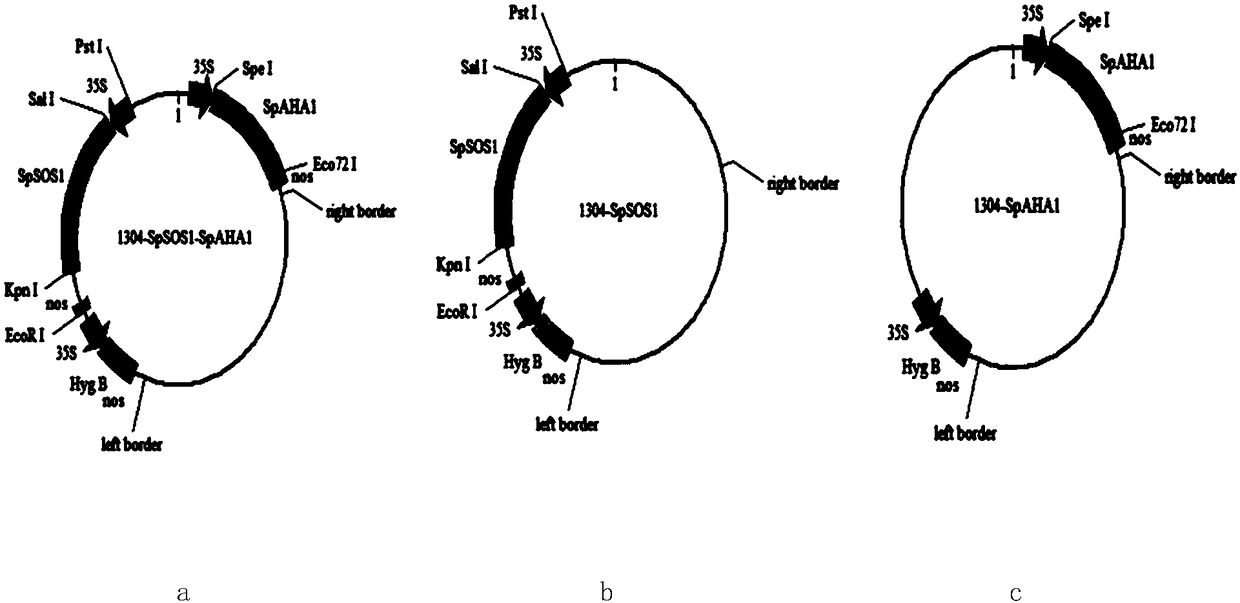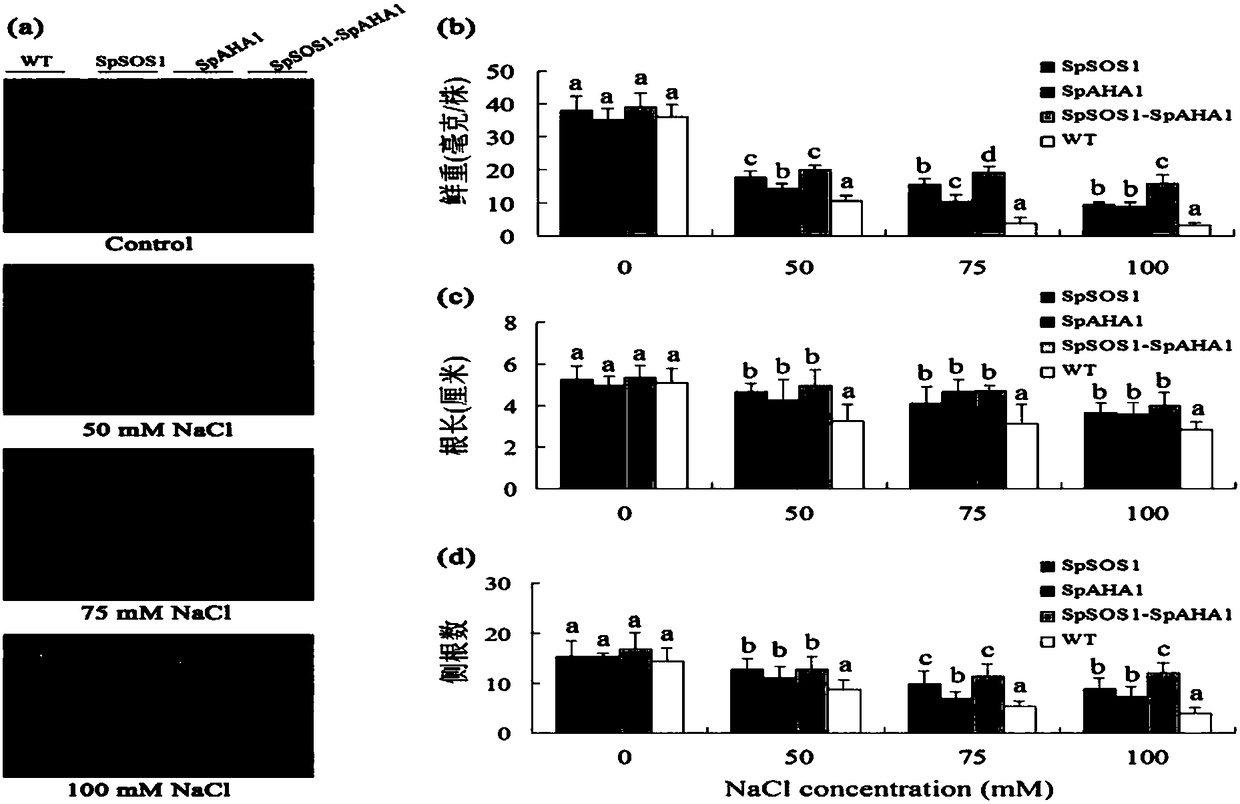Method for improving salt tolerance of plants
A plant stress tolerance, plant technology, applied in the direction of botanical equipment and methods, biochemical equipment and methods, plant peptides, etc., to achieve the effect of improving salt tolerance
- Summary
- Abstract
- Description
- Claims
- Application Information
AI Technical Summary
Problems solved by technology
Method used
Image
Examples
Embodiment 1
[0050] Embodiment 1, the acquisition of transgenic Arabidopsis and its salt tolerance analysis
[0051] 1. Obtaining transgenic Arabidopsis
[0052] 1. Construction of the carrier
[0053] (1) Double gene plant expression vector
[0054] Clone hippocampal tooth cell membrane Na + / H + antiporter gene SpSOS1 and membrane H + -ATPase gene SpAHA1, and construct it into the same plant expression vector pCAMBIA1304. The specific operation is as follows: first clone the SpSOS1 gene (sequence 1), and insert it between the Sal I and Kpn I sites of the pCAMBIA1300 vector (Cambia, Australia) to obtain the starting plasmid pCAMBIA1300-SpSOS1; I double-digest plasmid pCAMBIA1300-SpSOS1, and insert the fragment (which contains 35S promoter, SpSOS1 gene and NOS terminator) into pCAMBIA1304 vector (Cambia, Australia) to obtain intermediate plasmid pCAMBIA1304-SpSOS1; finally clone SpAHA1 gene (sequence 3), and it is inserted between the Spe I of pCAMBIA1304-SpSOS1 carrier and the Eco72...
PUM
 Login to View More
Login to View More Abstract
Description
Claims
Application Information
 Login to View More
Login to View More - R&D
- Intellectual Property
- Life Sciences
- Materials
- Tech Scout
- Unparalleled Data Quality
- Higher Quality Content
- 60% Fewer Hallucinations
Browse by: Latest US Patents, China's latest patents, Technical Efficacy Thesaurus, Application Domain, Technology Topic, Popular Technical Reports.
© 2025 PatSnap. All rights reserved.Legal|Privacy policy|Modern Slavery Act Transparency Statement|Sitemap|About US| Contact US: help@patsnap.com



